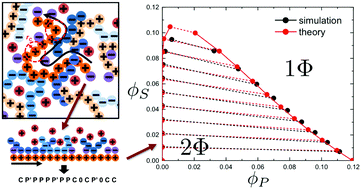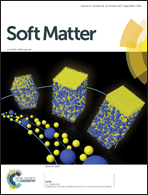Transfer matrix theory of polymer complex coacervation
Abstract
Oppositely charged polyelectrolytes can undergo a macroscopic, associative phase separation in solution, via a process known as complex coacervation. Significant recent effort has gone into providing a clear, physical picture of coacervation; most work has focused on improving the field theory picture that emerged from the classical Voorn–Overbeek theory. These methods have persistent issues, however, resolving the molecular features that have been shown to play a major role in coacervate thermodynamics. In this paper, we outline a theoretical approach to coacervation based on a transfer matrix formalism that is an alternative to traditional field-based approaches. We develop theoretical arguments informed by experimental observation and simulation, which serve to establish an analytical expression for polymeric complex coacervation that is consistent with the molecular features of coacervate phases. The analytical expression provided by this theory is in a form that can be incorporated into more complicated theoretical or simulation formalisms, and thus provides a starting point for understanding coacervate-driven self-assembly or biophysics.

- This article is part of the themed collection: Complex Coacervation


 Please wait while we load your content...
Please wait while we load your content...